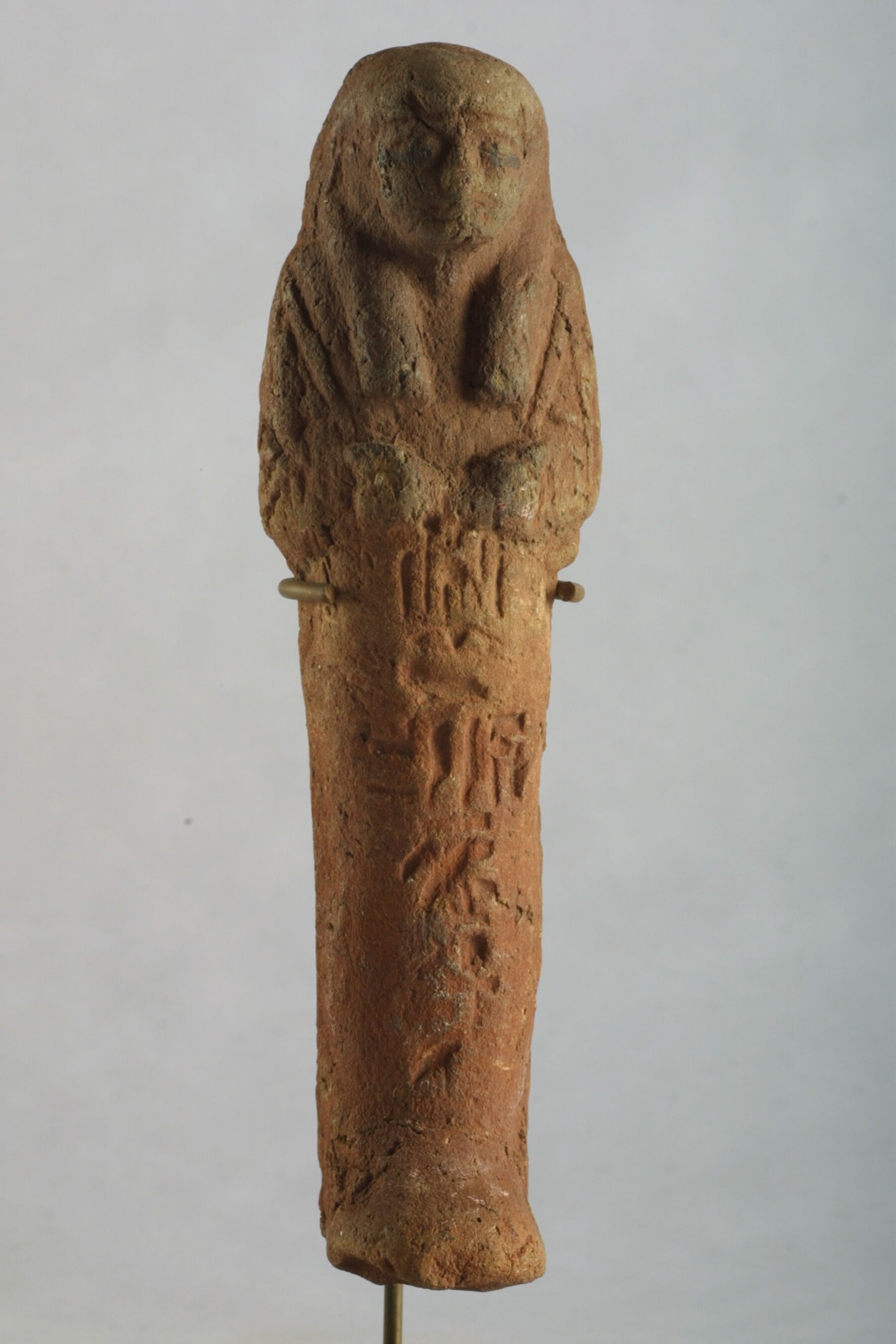The shabti owner Ankhmut is also known by his longer name Ankhefenmut, which appears on his coffins, funerary papyri, and other shabtis. Ankhmut was originally buried in Deir el-Bahri, tomb number TG 813, during Dynasty 21 (ca. 1076–944 BCE).1 His funerary assemblage was found in the second Deir el-Bahri cache in the Bab el-Gasus.2 Over 150 bodies of Theban priests and priestesses and their burial assemblages dating to the Third Intermediate period were found in this cache.3
His ceramic mummiform shabti wears a long lappet wig. The arms are crossed, and his hands protrude from the wrappings, grasping two hoes. On his back is a large seed bag painted black. The central inscription details that Ankhmut had the priestly title of “God’s Father” for both the god, Amun, and the goddess and Amun’s consort, Mut.
EW
-
Aston, David A. 2009. Burial Assemblages of Dynasty 21-25: Chronology - Typology - Developments. Contributions to the Chronology of the Eastern Mediterranean 21; Österreichische Akademie der Wissenschaften, Denkschriften der Gesamtakademie 54. Vienna: Österreichische Akademie der Wissenschaften.. ↩︎
-
Schneider, H.D. 1977. An Introduction to the History of Ancient Egyptian Funerary Statuettes with a Catalogue of the Collection of Shabtis in the National Museum of Antiquities at Leiden, vol. 2. Leiden: Rijksmuseum van Oudheden.. ↩︎
-
Sousa, Rogério. 2019. Gilded Flesh: Coffins and Afterlife in Ancient Egypt. Oxford: Oxbow.. ↩︎
Bibliography
- Aston 2009
- Aston, David A. 2009. Burial Assemblages of Dynasty 21-25: Chronology - Typology - Developments. Contributions to the Chronology of the Eastern Mediterranean 21; Österreichische Akademie der Wissenschaften, Denkschriften der Gesamtakademie 54. Vienna: Österreichische Akademie der Wissenschaften.
- Schneider 1977b
- Schneider, H.D. 1977. An Introduction to the History of Ancient Egyptian Funerary Statuettes with a Catalogue of the Collection of Shabtis in the National Museum of Antiquities at Leiden, vol. 2. Leiden: Rijksmuseum van Oudheden.
- Sousa 2019
- Sousa, Rogério. 2019. Gilded Flesh: Coffins and Afterlife in Ancient Egypt. Oxford: Oxbow.
